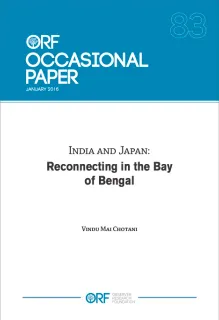The end of the Second World War in 1945 paved the way for transformations that would shape the South Asian theatre for decades to follow. States, in their desire to promote economic development, adopted more inwardlooking policies. During this time, security threats were also focussed on land frontiers, rather than the maritime domain, leaving the Bay of Bengal region essentially a backwater for a long time. The region, characterised by poverty and instability, was also constrained by low level of economic integration amongst the Bay states. By the 1980s, Burma, due to its brutal military suppression of pro-democracy supporters, faced isolation from the regional and international community. Bangladesh, for its part, was in its nascent stages of development, while India, in order to maintain its strategic autonomy, chose to pursue a policy of non-alignment. Strategically speaking as well, after the 1971 Enterprise Episode in the Bay of Bengal, US energies in the Indian Ocean were diverted towards the Middle East.
Today the Bay of Bengal is rising: not only in economic importance, but strategically, too. It serves as an important transit zone between the Indian and Pacific Oceans, and is home to important Sea Lines of Communication (SLOC), a huge amount of trade, and developing middle-income countries, such as Bangladesh, Myanmar, Thailand and Sri Lanka who are all willing and eager to engage with South East Asia and East Asia.
A number of political and economic developments are also currently transforming the region. In Burma, a process of democratic reform following the fall of military rule, has prompted renewed cooperation from many states. China, meanwhile, in its quest to connect its landlocked provinces to the Indian Ocean through the Bay, has started a large number
of connectivity projects including the construction of ports, roads, pipelines and railways. Indeed, what the Bay of Bengal is witnessing is nothing short of a scramble by China, India and Japan to build connectivity throughout 2 the region. These global powers, though, have their eyes set not only on economic opportunities in the Bay; further, they are engaging in strategic manoeuvring, alongside other powers like the United States and Russia, in 3 building defence relationships in the region. The US, through its ‘rebalance to Asia’ policy, has renewed its military engagement with Burma and is also deepening cooperation with India. Russia, for its part, has found a growing defence market in Pakistan. There has also been growing strategic engagement between India, Japan and the US in the form of maritime naval exercises such as Malabar in 2015.

 PDF Download
PDF Download



 PREV
PREV


